Departmental news
UK aims to be the first Country in the world to circulate steel and aluminium fully, supported by the CircularMetal programme
§ The UKRI National Interdisciplinary Circular Economy Research Programme aims to create a sustainable circular economy for lots of different industries, including metals
§ Metals and metal products create 10-20% of all the world’s harmful impacts, such as greenhouse gas emissions and pollution and energy consumption; we cannot do without goods made from metals; so we must learn how to make their use circular, i.e. extend their lifetimes and increase their repair, re-use and recycling
§ The Interdisciplinary Centre for Circular Metals aims to accelerate the transition from the current largely take-make-waste linear economy to full metal circulation by conducting high quality research and innovation through a systems approach. Its ambition is to make the UK the first country to realise full metal circulation (at least for the high-volume metals – steel and aluminium) by 2050. This will form an integral part of the government’s efforts to achieve Net Zero by 2050
§ To deliver the CircularMetal research programme, WMG at the University of Warwick will conduct inter-disciplinary research on steel production, recycling technologies, remanufacturing of steel components, and artificial intelligence in scrap separation
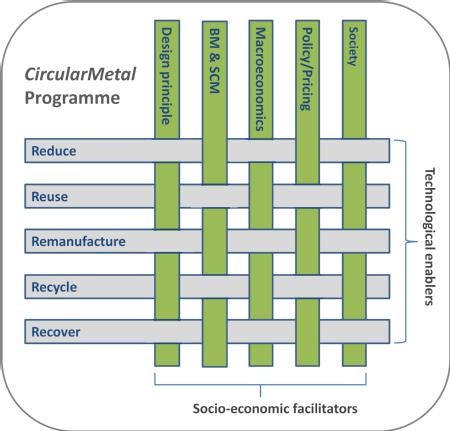 The metal industry in the UK employs 230,000 people, and directly contributes to £10.7bn to the UK GDP. A truly interdisciplinary academic team will research how to make a sustainable circular economy for high-volume metals, with WMG at the University of Warwick focussed on steel.
The metal industry in the UK employs 230,000 people, and directly contributes to £10.7bn to the UK GDP. A truly interdisciplinary academic team will research how to make a sustainable circular economy for high-volume metals, with WMG at the University of Warwick focussed on steel.
The UKRI has established five Interdisciplinary Circular Economy Centres in the UK, coordinated by the Circular Economy Hub (CE-Hub), which together form the NICER Programme, a £30 million investment on research aimed at developing a circular economy in the UK, One of these CECs is CircularMetal, the Interdisciplinary Centre for Circular Metals, led by Brunel University London, with partners from WMG, University of Warwick, University College London and Loughborough University.
The ultimate aim of the group is to make the UK fully circulate all their steel and aluminium, thereby minimising or eliminating the extraction of raw materials and the production of waste.
WMG, at the University of Warwick, will specifically research steel, including opportunities for reuse and the technologies for scrap sorting to increase recyclability, working with partners in the project on business model supply chains and the economy and policy surrounding them.
The Interdisciplinary Centre for Circular Metals is a four-year project, which started in January 2021 thanks to £4.2m funding from UKRI. Discussions within the team on strategies to reuse / recycling / reduce / remanufacture / recovery and the technological barriers are on-going with input being provided to government groups.
Professor Claire Davis, from WMG, University of Warwick comments:
“To be part of the Interdisciplinary Centre for Circular Metals is incredibly exciting, especially in light of COP26, as the potential that a circular economy for metals could have towards meeting goals of sustainability and furthermore preventing climate change.
“At WMG, University of Warwick we hope to research how technology can help us to reuse and recycle steels, for example, understanding the end of life condition of steel components to determine whether and how they can be used, and using artificial intelligence to increase scrap recyclability.
“If metals can be fully recycled and reused the need to extract raw materials to make them in the first place could be eliminated, and the current workforce in the metals industry could be reskilled to work in recycling and repurposing metals.”
Professor Brian Cantor, Deputy Director, The UKRI Interdisciplinary Centre for Circular Metals BCAST, from Brunel University comments:
“Metallic materials are the backbone of manufacturing and the fuel for economic growth. They underpin the competitive position of almost every industrial sector and, including metal manufacture and downstream product processing, they collectively contribute 15-20% of all greenhouse gas emissions, pollution and energy consumption. Transformation of the metals industries from the current largely linear economy to a circular economy will, therefore, play a critical role in delivering the government’s industrial strategy for clean growth, doubling of resource productivity and reaching net zero carbon emissions in 2050.
“CircularMetal is focused on helping the UK become the first country to realise full metal circulation, concentrating on the two main bulk metals aluminium and steel, and the three main industrial sectors of transport, construction and packaging.”
ENDS
22 DECEMBER 2021
NOTES TO EDITORS
High-res images available at:
https://warwick.ac.uk/services/communications/medialibrary/images/september_2021/picture1.jpg
Caption: A graphic of the factors considered in the CircularMetal programme
Credit: WMG, University of Warwick
https://warwick.ac.uk/services/communications/medialibrary/images/september_2021/picture2.jpg
Caption: The building the Warwick arm of the CircularMetal project are based in at WMG, University of Warwick
Credit: WMG, University of Warwick
FOR FURTHER INFORMATION PLEASE CONTACT:
Alice Scott
Media Relations Manager – Science
University of Warwick
Tel: +44 (0) 7920 531 221
E-mail: alice.j.scott@warwick.ac.uk
Wall climbing robot can reduce workplace accidents
- A wall climbing robot made by HausBots can reduce workplace accidents, as it can be used for inspection and maintenance tasks such as building and infrastructure inspection and surveying or even painting.
- However, to make sure the robot itself would work and is safe to use researchers from the WMG SME group helped the local business design and test the robot
- The robot is now on the market, after a four-year journey from a garage in Bournville to Singapore
 A novel wall climbing robot, built designed and created by Birmingham based HausBots with the help of WMG at the University of Warwick is on the market, and could reduce the number of workplace accidents.
A novel wall climbing robot, built designed and created by Birmingham based HausBots with the help of WMG at the University of Warwick is on the market, and could reduce the number of workplace accidents.
HausBots is a Birmingham based company who are on mission to use technology to protect and maintain the built environment. They have designed, built and created an innovative wall-climbing robot, that can climb vertical surfaces and be used for inspection and maintenance tasks such as building and infrastructure inspection and surveying or even painting.
The idea of the HausBots started in the co-founder’s garage, and with the help of the WMG SME team the robot was bought to life, as the team were able to help with building the prototype and testing the technology.
Four years ago, when the first prototype was developed researchers at WMG, University of Warwick worked with HausBots on the circuit motor controls and designed the system to help them get production ready thanks to the Product Innovation Accelerator scheme with CWLEP.
One the key uses of the HausBots is to help reduce the number of workplace accidents, in the US 85,000 workers fall from height every year, of which 700 of them will be fatal. The accidents also cost insurance companies over $1bn in claims every year, therefore not only does reducing the amount of accidents mean less injuries and trauma, but also means there’s a huge economic saving.
However, to ensure the robot itself doesn’t fall it had to undergo extensive electro-magnetic compatibility (EMC) testing to make sure the fans, which essentially attach it to the surface are functioning correctly.
The WMG SME team tested the robot by placing it in the EMC chamber and assessing how it responds to noise and to make sure it didn’t emit any unwanted noise into the atmosphere itself. Using amplifiers to simulate noise and analysers, the researchers were able to detect any unwanted interference and emissions with the robot and record results.
Dr David Norman, from the WMG SME group at the University of Warwick comments: “It has been a pleasure to be with HausBots and help them develop their product, the concept of the robot is incredible, and could save lives and reduce the number of workplace accidents.
“Our facilities and expertise have helped HausBots develop a market-ready product, which is now on the market and has carried out many jobs from painting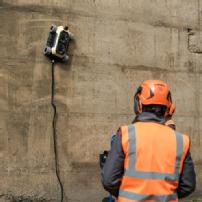 and cleaning the graffiti off the spaghetti junction in Birmingham. We hope to continue working with them in the future and can’t wait to see where they are this time next year.”
and cleaning the graffiti off the spaghetti junction in Birmingham. We hope to continue working with them in the future and can’t wait to see where they are this time next year.”
Jack Crone, CEO and Co-Founder of HausBots comments:
“The WMG SME group have helped us from day one, by helping us build the prototype all the way to making sure the robot safely sticks to the wall and carries out its job efficiently.
“We have worked tirelessly over the last 3 years to make HausBot, and we are incredibly excited to have sold our first one to a company in Singapore, we hope this is the first of many that will also help reduce numbers of workplace accidents.
“Going forward we hope to continue our work with WMG at the University of Warwick to make more robots for other uses that can reduce harm to humans.”
ENDS
14 DECEMBER 2021
NOTES TO EDITORS
High-res images available at:
https://warwick.ac.uk/services/communications/medialibrary/images/november_2021/graffiti_1.png
Caption: The HausBot robot in action covering up graffiti
Credit: HausBot
https://warwick.ac.uk/services/communications/medialibrary/images/november_2021/hausbot_house.png
Caption: The HausBot robot in action painting a house
Credit: HausBot
https://warwick.ac.uk/services/communications/medialibrary/images/november_2021/hausbot_in_action.jpg
Caption: The HausBot robot in action
Credit: HausBot
Video available to view at:
https://www.youtube.com/watch?v=b_hoPocYGAo
Caption: The robot covering up graffiti
Credit: HausBot
https://www.youtube.com/watch?v=VxDWJyLgBdM
Caption: The Robot in action in many ways
Credit: HausBot
For further information please contact:
Alice Scott
Media Relations Manager – Science
University of Warwick
Tel: +44 (0) 7920 531 221
E-mail: alice.j.scott@warwick.ac.uk
Challenges of transport electrification skills to be addressed by Universities of Warwick and Newcastle
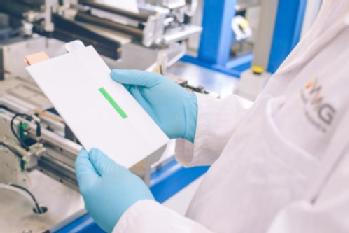 Two leading universities in the field of electrification – WMG at the University of Warwick and Newcastle University – are coming together to ensure the UK workforce has the skills necessary to meet the challenges of the transition to fully electric production.
Two leading universities in the field of electrification – WMG at the University of Warwick and Newcastle University – are coming together to ensure the UK workforce has the skills necessary to meet the challenges of the transition to fully electric production.
As anchor higher education institutions with exceptional research and innovation programmes operating in regions at the forefront of the UK’s electric revolution, the universities intend the collaboration will enable the growth of a talent pipeline of graduates and postgraduates into UK business. Led by WMG at the University of Warwick and Zero Carbon Futures at Newcastle University part of the school of engineering, the effort will identify the people, skills and facilities needed across a range of academic disciplines and levels in order to deliver new curriculums to meet growing industry demand.
The UK’s move to fully electric vehicle production and domestic battery manufacturing represents the largest shift in industrial skills for the UK in a generation, leaving competency gaps at all job levels, particularly in engineering and manufacturing roles which will need to be filled with specific education and training. The Faraday Institution estimates that to meet automotive production demand by 2040, an additional 70,000 skilled employees will be needed for battery manufacture and in the associated material supply chain.
“In light of COP26, which stressed the need for electrification to help us combat climate change and reach Net Zero goals, it is imperative that researchers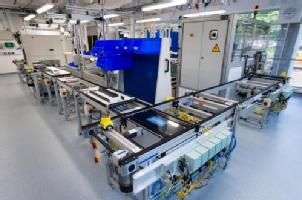 and industry work together to bridge the gaps and create a smooth transition to electrification,” commented Dr Benjamin Silverstone from WMG, University of Warwick. “We are delighted to be working with Newcastle University and believe that together we can define what and who needs upskilling, reskilling and new-skilling.”
and industry work together to bridge the gaps and create a smooth transition to electrification,” commented Dr Benjamin Silverstone from WMG, University of Warwick. “We are delighted to be working with Newcastle University and believe that together we can define what and who needs upskilling, reskilling and new-skilling.”
Professor Colin Herron CBE, Zero Carbon Futures at Newcastle University and Faraday Institution North East regional liaison said, “The bringing together of the two leading universities in electrification, located in the two regions leading on transport electrification is an exciting prospect, and one which should deliver the skills required for massive challenges ahead.”
“We fully support this collaboration between two powerhouse institutions working at the forefront of electrification,” said Professor Pam Thomas, CEO, The Faraday Institution. “Such innovative partnerships will enable the UK to anticipate and deliver the skills needed to fully electrify transport, grow new talent for battery production, and support green growth and economic development."
Another key objective of the collaboration is to help shape national and regional skills strategies and in so doing support national and regional economic development. The call for a collaborative approach to re-skilling, up-skilling and new-skilling the workforce for the electric revolution was published in a report by WMG, University of Warwick, the Faraday Institution and the High Value Manufacturing Catapult ‘The Opportunity for a National Electrification Skills Framework and Forum’ in September 2021.
ENDS
14 DECEMBER 2021
NOTES TO EDITORS
High-res images available at:
https://warwick.ac.uk/services/communications/medialibrary/images/july_2020/wmg_ukbic-33.jpg
Caption: A battery pouch made at WMG, University of Warwick
Credit: WMG, University of Warwick
https://warwick.ac.uk/services/communications/medialibrary/images/july_2020/d2807-27.jpg
Caption: A battery production line at WMG, University of Warwick
Credit: WMG, University of Warwick
https://warwick.ac.uk/services/communications/medialibrary/images/july_2020/wmg_ukbic-49.jpg
Caption: A battery production line at WMG, University of Warwick
Credit: WMG, University of Warwick
FOR FURTHER INFORMATION PLEASE CONTACT:
Alice Scott
Media Relations Manager – Science
University of Warwick
Tel: +44 (0) 7920 531 221
E-mail: alice.j.scott@warwick.ac.uk
Heritage locomotive project picks up steam thanks to WMG
WMG’s SME Team has been supporting 3D Heritage and The A1 Steam Locomotive Trust (A1SLT) in their quest to revive steam rail travel.
3D Heritage and The A1 Steam Locomotive Trust’s (A1SLT) plan was to build a brand new Gresley class P2 steam locomotive, No. 2007 Prince of Wales at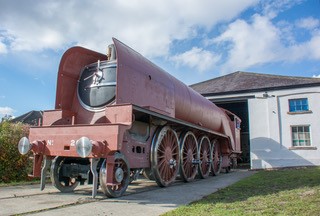 its Darlington Locomotive Works (DLW). The original class P2s were designed by Sir Nigel Gresley to haul trains on the arduous Edinburgh to Aberdeen route, however sadly the design was never fully developed to its full potential.
its Darlington Locomotive Works (DLW). The original class P2s were designed by Sir Nigel Gresley to haul trains on the arduous Edinburgh to Aberdeen route, however sadly the design was never fully developed to its full potential.
With new technology and expertise, they decided to resurrect the class P2s and bring their dream to life. However, there were some design and materials challenges, specifically with the original Lentz valve gear and cambox, that needed to be resolved.
WMG’s Innovation Manager, Dr Paul Lansdell, worked with the 3D Heritage and the Trust to create a CAD model that could be tested and amended. He also recommended the use of 3D printing in ABS plastic to create a one-third scale model of the cambox for the team to see if any changes were required before committing to manufacture. The box also featured a series of windows that enabled the engineering team to see what was happening with the valve mechanism on the inside.
Following the creation of the model, Dr Lansdell went on to explore the material grades, surface coatings and heat treatment which previously caused issues. This work has been extremely transformative, giving the project huge advantage for making reliable and durable valve gear. He has gone on to explore the use of 3D printing to create sand moulds to manufacture various parts of the locomotive. Developing patterns for sand casted metal parts can be extremely expensive and if there is an issue with the casting of the part it can be costly to start the process again.
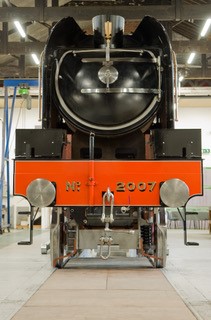 Martin Shepherd, Director of 3D Heritage said: “WMG’s support on this project has been invaluable. The advice we have received from Dr Lansdell has enabled us to look at options that we never would have considered before that have the potential to save the project tens of thousands of pounds.”
Martin Shepherd, Director of 3D Heritage said: “WMG’s support on this project has been invaluable. The advice we have received from Dr Lansdell has enabled us to look at options that we never would have considered before that have the potential to save the project tens of thousands of pounds.”
Dr Paul Lansdell, explained: “I have been honoured to work on this prestigious project which has allowed us to apply leading edge research and new techniques on a real-world business case.”
To find out more about the project contact Paul Lansdell: wmgsme@warwick.ac.uk
WMG unveils the world’s first EV Thermal Management Testbed
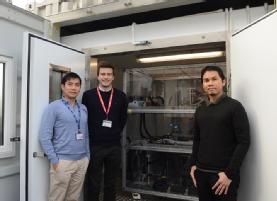 WMG has unveiled a special Thermal Management Testbed, to allow holistic investigation of HVAC (Heating, Ventilation and Air Conditioning) and other vehicle sub-systems under real-world conditions.
WMG has unveiled a special Thermal Management Testbed, to allow holistic investigation of HVAC (Heating, Ventilation and Air Conditioning) and other vehicle sub-systems under real-world conditions.
The Testbed, which is a world-first, was funded by the High Value Manufacturing Catapult, and is located at the University of Warwick’s Wellesbourne campus. It is designed specifically to develop and evaluate efficient thermal management systems for electric vehicles; including cabin climate control; thermal management of energy storage and electric machines; and the impact on the overall performance of the vehicle.
Truong Quang Dinh, Associate Professor of Energy System Management and Control at WMG, explains: “Effective heating and cooling of vehicle sub-systems is indispensable to ensure safety, reliability and comfort. Our unique thermal management testbed integrates a highly flexible HVAC rig and a hybrid physical-virtual powertrain for the holistic investigation of thermal management systems and other vehicle sub-systems under real-world conditions. This enables real-time tests from vehicle components, sub-systems, to entire systems at lowest time, cost and effort.”
One project that will be exploring the capabilities of the new Thermal Testbed is Cit-E-Van, - a collaboration between WMG, CoolVan and GAH, funded by Innovate UK. Cit-E-Van will look to develop an energy efficient electric refrigerated vehicle with an optimised electric transport refrigeration unit and retrofit the electric propulsion system with advanced thermal-energy management features.
In the coming months WMG experts will be working with more industry partners to develop HVAC solutions.
For further information about the testbed or HVAC solutions in general contact Truong Quang Dinh at: t.dinh@warwick.ac.uk
New city climate change commission to drive forward low carbon targets
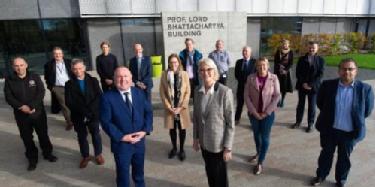 Senior leaders from organisations across Coventry met today to help shape and move forward actions to reduce the impact of climate change.
Senior leaders from organisations across Coventry met today to help shape and move forward actions to reduce the impact of climate change.
A new Coventry Climate Change Board will meet regularly to share policies, plans, good practice and work together collaboratively in an effort to keep the city on track for a zero carbon future.
The Board is chaired by Margot James, the former minister for culture, communications and creative industries and Executive Chair for WMG at the University of Warwick.
Senior representatives from businesses located in the city, public service providers and community organisations will work together on plans for the future of the city.
Margot James, Executive Chair at WMG, University of Warwick said:
“I want to be involved in the Board because I believe organisations must collaborate if we are to reduce our carbon footprint. This applies to the public sector and the commercial sector, charities and voluntary groups of all sizes.
“At WMG we are working with industry to develop solutions that will have a long-term impact on climate change, including electrification of transport from passenger cars to very light rail vehicles, and developing sustainable manufacturing processes.
“I want this Board to make a difference and cut through any blockages preventing action within and between the organisations we represent to develop collaborative solutions to sometimes complex issues.”
“Ultimately, we need to set out actions and win hearts and minds. We also want to communicate how residents of all ages can be involved. It’s about the wellbeing of future generations in the city.
“I expect more organisations will be invited to join the Board in the coming months.”
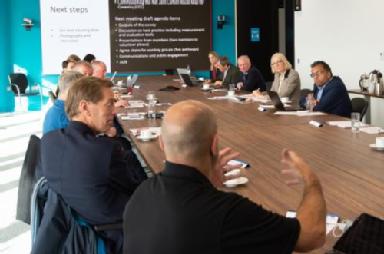 Cllr Jim O’Boyle, Cabinet Member for Jobs, Regeneration and Climate Change at the Council, added: “As a local authority we are applying innovative approaches and technologies but no one organisation can work alone to address a low carbon future.
Cllr Jim O’Boyle, Cabinet Member for Jobs, Regeneration and Climate Change at the Council, added: “As a local authority we are applying innovative approaches and technologies but no one organisation can work alone to address a low carbon future.
“I hope that as a Board and a combined group of organisations we can come together to identify new ways of working together.
“I’m sure that we will be able to deliver a range of cost-effective schemes to invest in a more sustainable future for the city.”
§ Last week Coventry held a COP26 Regional Roadshow highlighting a Transport Expo which was funded by the UK Government to celebrate and showcase the city’s innovative work in addressing climate change and decarbonising transport in the city.
§ Coventry has an A-rated CDP energy performance rating which is a national standard that is independently verified.
§ It has the highest number of electric charging points per head of population outside of London and will be the first city with an all-electric bus fleet from 2025.
The Council is investing in 5,000 solar panels on 41 Coventry buildings with public funding and there are many other schemes that city partners are supporting.
ENDS
17 NOVEMBER 2021
NOTES TO EDITORS
High-res images available at:
https://warwick.ac.uk/services/communications/medialibrary/images/november_2021/171121coventryclimatechangeboard_36.jpg
Caption: Front, Cllr O’Boyle with Margot James and partners from organisations across Coventry congregating outside the Prof. Lord Bhattacharyya building home to NAIC the National Automotive Innovation Centre at WMG, University of Warwick
Credit: Mark Radford Photography
https://warwick.ac.uk/services/communications/medialibrary/images/november_2021/171121coventryclimatechangeboard_29.jpg
Caption: The board congregating at WMG, University of Warwick
Credit: Mark Radford Photography
https://warwick.ac.uk/services/communications/medialibrary/images/november_2021/171121coventryclimatechangeboard_08.jpg
Caption: Margot James, Executive Chair of WMG, University of Warwick talking to the board
Credit: Mark Radford Photography
https://warwick.ac.uk/services/communications/medialibrary/images/november_2021/171121coventryclimatechangeboard_03.jpg
Caption: Cllr Jim O’Boyle talking to the board
Credit: Mark Radford Photography
For further information contact:
Alice Scott
Media Relations Manager – Science
University of Warwick
Tel: +44 (0) 7920 531 221
E-mail: alice.j.scott@warwick.ac.uk
Coventry schools to build future cities from recycled household items
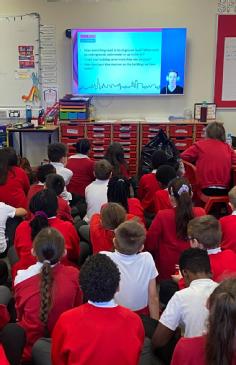
· TeenTech is a national charity working with school children to help them consider a future in digital, science technology and engineering.
· Their TeenTech City of Tomorrow initiative is working with nine Coventry schools with the help of WMG, University of Warwick
· Experts from WMG will deliver advice to children on sustainable materials, and inspire them as they design and build their city of the future out of recyclable household items
· A few Cities will then be exhibited at The Coventry Transport Museum
TeenTech City of Tomorrow will see Coventry school children make a city of recyclable household items, with help from researchers at WMG, University of Warwick who will teach them all about sustainability. A select few ideas – buildings and technology- will then be exhibited at the Coventry Transport Museum.
TeenTech is a national charity engaging children and teenagers in Digital, Science, Engineering and Technology and their latest initiative has launched today, the 11th November, in Coventry, which will see nine schools in Coventry build a futuristic sustainable city out of recyclable household items.
As it’s ‘Cities, Regions and Built Environment’ day at the COP26 summit in Glasgow, researchers from WMG at the University of Warwick are helping children understand sustainability and its importance, by delivering an online session about sustainable materials and why it’s important we use them more for a greener future, thanks to funding from the University’s Innovative Manufacturing and Future Materials GRP.
The children will then have two weeks to build their cities from recyclable household items. Three researchers from WMG, University of Warwick will run workshops, educating the children in using natural products for sustainable solutions and how to dispose of products.
On the 25th November the researchers from will then provide feedback, before selecting a few of the buildings and ideas to be exhibited at the Coventry Transport Museum from the end of the month.
Dr Stuart Coles from WMG, University of Warwick comments:
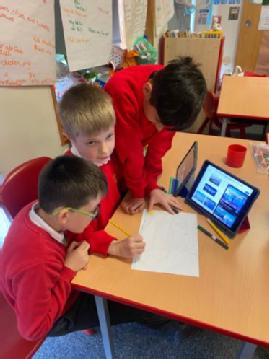
“Having spent my career researching how to reduce, reuse and recycle materials I am honoured to be a part of the TeenTech City of Tomorrow initiative, and look forward to seeing how creative the children can be in making a futuristic and environmentally friendly city.
“It is our children that will suffer from the damage we have caused and are causing to the planet, therefore it is imperative that we educate them from young age about sustainability and how they can create a cleaner and greener future for themselves and future generations, whilst we work out how we can change our ways to further prevent the climate crisis.”
Maggie Philbin, CEO of TeenTech comments:
“We want young people in Coventry to understand they can shape the future with their ideas. Young people think boldly, differently and inclusively and this is the thinking we need for a sustainable future. Tomorrow is very much a two-way event – experts will be sharing their knowledge, but we know that it will be the children who surprise everyone with their creativity, honesty and who will be the ones to challenge outdated thinking.
“Their buildings may be constructed from cardboard boxes but their ideas will be sophisticated and ones which should be seriously considered. They really are the architects, the engineers and the designers of the future. Let’s listen to them.”
Mrs Kaur, Class Teacher at Courthouse Green primary school comments:
"TeenTech is a great project to engage and enthuse the children and encourages them to consider how to be responsible about improving their environment. It has given the children the opportunity to think big about their world. their future and their role within it.
"The children are learning life skills, teamwork and are thinking outside the box to design and create cities that could effect change. The project is amazing! If I could give up a whole week to work on this, I would...it's real-life skills in the classroom."
Two children from year 5 at Courthouse Green Primary school have said:
"I love the project because it will help the future. It has made me think about climate change and how it is affecting our cities. In Coventry I see lots of litter and it gives our city a bad reputation. My team, Team Queen Tech are designing a treehouse from recycled materials that filters wastewater to use again." - Bhavika age 9
"We have designed a hotel for homeless people which is made from sustainable materials like bamboo." Sanjot Age 9
Composites award wins for WMG research
Two WMG research projects, Project AMICABLE and Project TUCANA, were recognised at the Composites Industry Awards this week.
Project AMICABLE, a 12-month Innovate UK funded project, which set out to produce a lightweight, permanently antimicrobial grab pole for use in public transport, won the Innovation in Composite Materials award.
transport, won the Innovation in Composite Materials award.
Researchers from WMG’s Lightweight Materials and Manufacturing team worked with, product designers Transport Design International (TDI), anti-microbial additive developers BioCote and Promethean Particles and the Health and Safety Executive (HSE), and manufacturers Composites Braiding Ltd (CBL), to produce lightweight composite grab-poles with an embedded anti-microbial property.
The anti-microbial grab poles can be used in a wide range of public transport applications, such as bus, tram, rail and underground, helping to reduce transmission of infections.
A second project involving experts from WMG, called Project Tucana and led by Jaguar Land Rover, was recognised in the Innovation in Composite Design category.
The APC funded project is an enabler for future generations of Battery Electric Vehicles (BEV), demonstrated through the redesign of the rear structure of a Jaguar I-Pace, the acclaimed Jaguar Land Rover (JLR) BEV, bringing together a consortium of world-leading academic and industry partners. Researchers and engineers from WMG’s Automotive Composites Research Centre helped to develop the manufacturing technology to design stiffer and lighter vehicle structures using light weight carbon fibre materials.
Read more about the Composites Industry Awards here: Composites Industry Awards | Composites UK
Energy stored in electric car batteries could be used to power homes
With vehicle-to-grid (V2G) technology, electric vehicle (EV) batteries could store electricity - when there is an abundant supply - to power homes and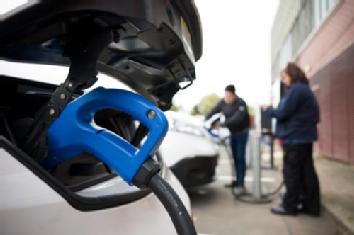 businesses and discharge it back to the national grid when it is most needed.
businesses and discharge it back to the national grid when it is most needed.
This enables better use of renewable energy, lower carbon footprint, less pressure on the grid and financial savings, which can help electric vehicle owners pay back their investment.
During the course of this year, the EV-elocity project has been deploying V2G chargers in a range of locations across England to as part of large-scale trials to gain technical, customer and commercial insights on the emerging technology. It is also investigating if, and how, additional use from V2G charging may affect EV battery life.
The project, led by Cenex, a not-for-profit consultancy specialising in delivery of low carbon vehicles and energy infrastructure projects also involves the Universities of Nottingham and Warwick; Leeds and Nottingham City Councils; and CrowdCharge, a platform that integrates and optimises smart electric vehicle charges. EV-elocity is funded by the Department for Business Energy and Industrial Strategy (BEIS) and the Office for Zero Emission Vehicles (OZEV), in partnership with Innovate UK, part of UK Research and Innovation.
Chris Rimmer, Infrastructure Strategy Lead at Cenex, said: “After restarting the project in mid-2020, we are delighted to be testing V2G with such a range of sites and hardware. We’ll be working hard over the coming months to examine the cost, carbon and conditioning benefits of V2G, and publish our results as they become available.”
Professor James Marco, from WMG at the University of Warwick comments:
“A number of consumers and vehicle manufacturers are concerned that V2G will disproportionably reduce battery life, representing a potential barrier for widespread adoption of V2G and consumer acceptance. Here at WMG, University of Warwick, we are excited to be researching novel new methods of managing the V2G charging process not just to mitigate battery degradation, but to potentially use V2G to extend battery life.”
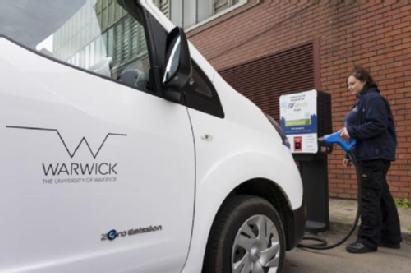 With V2G technology, EVs could help to support grid resilience when parked and plugged-in. Instead of installing huge and expensive community battery stores, an extensive network of EV batteries could be harnessed to absorb energy when renewable generation is plentiful and export it back to the grid during peak demand when carbon intensity is highest for a profit, making money back for users in the process.
With V2G technology, EVs could help to support grid resilience when parked and plugged-in. Instead of installing huge and expensive community battery stores, an extensive network of EV batteries could be harnessed to absorb energy when renewable generation is plentiful and export it back to the grid during peak demand when carbon intensity is highest for a profit, making money back for users in the process.
The project is installing multiple V2G charging demonstrators at sites owned by organisations -including city councils, universities and police forces - that employ large electric vehicle fleets. Latest data suggests that if the 5.3 million fleet vehicles on UK roads today were to switch to EV, it would save as much as 25 per cent of all UK transport emissions.
Dr Julie Waldron, Research Fellow at the University of Nottingham, who is studying user behaviour, said: “Company cars and vans tend to earn money while out on the road, but electric vehicles could also be a source of income when they’re parked up. We know cost is a major factor deterring mass adoption of electric vehicles, but if V2G charging helps EV owners get a quick return on their investment, it could make purchasing electric vehicles a much more attractive option to a bigger customer base.”
· With the biggest electric fleet of any local authority in England, Leeds City Council has installed 5 V2G chargers under the EV-elocity project
· The University of Nottingham, another user of EV fleets, has installed two V2G units on its main campus
· Cenex installed one V2G charger at Loughborough University Science and Enterprise Park, one charger at Worcestershire County Council and two chargers at West Midlands Police.
· University of Warwick installed three chargers on campus to be used by the Estates fleet
· Nottingham City Council, which also has a large electric vehicle fleet and a very ambitious target to become carbon neutral by 2028, is planning to install 40 units
Using data from V2G chargers and trackers in EV cars, and user behaviour analysis on the study, researchers are examining mobility patterns, EV charging requirements/trends, battery degradation, and electricity generation, storage and use.
“Understanding the patterns of vehicle usage will allow us to evaluate the best charging infrastructure required for EVs, for example the locations and type of charging points and plugs (which currently vary between car brands), compatibility with V2G, charging periods and energy demand, etc. This will enable us to rethink the system and inform the users’ decision-making process in order to maximise benefits for consumers and the planet.” Dr Waldron adds.
ENDS
10 NOVEMBER 2021
NOTES TO EDITORS
https://warwick.ac.uk/services/communications/medialibrary/images/november_2021/l1010256.jpg
Caption: A V2G charger on campus at the University of Warwick
Credit: EV-elocity
Caption: A V2G charger on campus at the University of Warwick
Credit: EV-elocity
https://warwick.ac.uk/services/communications/medialibrary/images/november_2021/l1010286.jpg
Caption: A V2G charger on campus at the University of Warwick
Credit: EV-elocity
Caption: A V2G charger on campus at the University of Warwick
Credit: EV-elocity
https://warwick.ac.uk/services/communications/medialibrary/images/november_2021/l1010293.jpg
Caption: A V2G charger on campus at the University of Warwick
Credit: EV-elocity
1. University of Nottingham
Researchers from the Transport, Mobility and Cities and the Building, Energy and Environment research groups are studying user behaviour in EV-elocity demonstrator trials. They have also developed a V2G case study that will be tested at the University Park Campus. The project fits in well with the University’s commitment to use innovative technologies to make its campuses smarter and more sustainable to enhance the user experience and reduce its carbon footprint. The campus’ infrastructures and services operate very much like those of a small town, so it is a great testbed for technology implementation prior to installation in real cities.
University Park campus uses different types of fleets, in terms of users, routines, parking location and dwell times. This behaviour data was analysed and correlated with other parameters such as routes and movement patterns, renewable energy availability on site, grid cost and grid energy carbon emissions to identify the most promising charging pattern and infrastructure to deliver financial and carbon savings, improve battery life and maximise local renewable energy consumption.
Under EV-elocity, two V2G units have been installed on University Park campus and will be collecting data until March 2022 to identify whether proposed usage delivers against the targets set.
https://www.ev-elocity.com/news/vehicle-to-grid-at-hallward-library-university-of-nottingham/
2. Cenex, Loughborough University Science and Enterprise Park
https://www.ev-elocity.com/news/the-uks-most-scenic-v2g-chargepoint-deployment/
3. Leeds City Council
https://www.ev-elocity.com/news/vehicle-to-grid-at-leeds-city-council/
Leeds has one of the largest public sector fleets of electric vehicles in the country and ambitions plans to continue its transition to a zero emission fleet as part of meeting a city-wide target to become the first net zero major city. This project is part of delivering on this ambition. There have been six V2G units installed in Leeds, one at our Parks & Countryside department headquarters at Farnley Hall and five at our Knowsthorpe Gate depot site. The chargers will be used by a range of different services vehicles across this sites with the Nissan Env-200’s utilised for the project having been fitted with telematics to capture data to feed into the projects assessment of the technology.
4. WMG University of Warwick
WMG is a world leading research and education group, transforming organisations and driving innovation through a unique combination of collaborative research and development, and pioneering education programmes.
As an international role model for successful partnerships between academia and the private and public sectors, WMG develops advancements nationally and globally, in applied science, technology and engineering, to deliver real impact to economic growth, society and the environment.
WMG’s education programmes focus on lifelong learning of the brightest talent, from the WMG Academies for Young Engineers, degree apprenticeships, undergraduate and postgraduate, through to professional programmes.
An academic department of the University of Warwick, and a centre for the HVM Catapult, WMG was founded by the late Professor Lord Kumar Bhattacharyya in 1980 to help reinvigorate UK manufacturing and improve competitiveness through innovation and skills development.
5. Worcestershire County Council
One vehicle-to-grid charger was installed at the headquarters of Worcestershire County Council, County Hall, in their underground staff car park. The test vehicle a 2016 Nissan Leaf is used by the council as a pool car for staff to make visits in the local area.
6. West Midlands Police
Two vehicle-to-grid chargers were installed at the mezzanine car park of the West Midlands Police Head Quarters. These units will be used to charge (and discharge) two Nissan Leafs (2016) that are part of the non-emergency response fleet based at the site in central Birmingham. These vehicles are used as pool cars by staff to attend non-urgent appointments and enquiries in the city and the surrounding area.
About EV-elocity:
The Project EV-elocity is part of the Vehicle-to-Grid (V2G) competition, funded by the Department for Business Energy and Industrial Strategy (BEIS) and the Office for Zero Emission Vehicles (OZEV), in partnership with Innovate UK, part of UK Research and Innovation.
The 20 V2G projects (8 feasibility studies, 4 collaborative research and development projects, and 8 real-world V2G trial projects) receive funding of £30m to develop the business proposition and the core technology to support V2G deployment in the UK, including its demonstration with large scale trials.
The 20 projects involve more than 50 industrial partners and research organisations from both the Energy and Automotive sectors, making it the largest and most diverse V2G activity in the world, trialling more than 500 vehicles and V2G charger units across UK.
The V2G projects represent a significant step towards the transition to a low carbon transportation and a smart energy system. Allowing EVs to return energy to the Power Grid when parked and plugged-in will increase Grid resilience, allow for better exploitation of renewable sources and lower the cost of ownership for EV owners, leading to new business opportunities and clear advantages for EV users and energy consumers.
For further information please contact:
Alice Scott
Media Relations Manager - Science
University of Warwick
Tel: +44 (0) 7920531221
E-mail: alice.j.scott@warwick.ac.uk
Aircraft engine noise pollution to be reduced thanks to novel maths of aero-acoustic simulations
- With ever-stricter noise regulations, aircraft and engine manufacturers are on a mission to reduce noise pollution from aircraft engines
- Novel aero-acoustic simulations that could be used to optimise the design of an aircraft engine and reduce noise will be made possible by Dr Ed Brambley from the University of Warwick
- Thanks to a £290,000 EPSRC grant, the work could revolutionise the way simulations are used in industry, with potential applications not only for aircraft noise but also in meteorology and weather forecasting
Computer simulations are used every day in engineering; however, Dr Ed Brambley will be looking at the maths behind the next generation of novel simulations, which can be used to reduce aircraft engine noise, thanks to a grant from the EPSRC.
Aircraft engines are loud (about 1000x louder than a pneumatic drill), and so designing aircraft engines and airplanes that are able to meet ever stricter noise regulations, whilst still being fuel efficient and cost effective, is a major challenge for aircraft and engine manufacturers.
However, thanks to a £290,000 grant from the EPSRC, Dr Ed Brambley, from WMG and the Department of Maths at the University of Warwick, will investigate the maths behind how computer simulations can be used to minimise the noise from aircraft engines, therefore reducing noise pollution.
Two numerical techniques specific to this project are called Finite Elements and Finite Differences. Both have their advantages and disadvantages: Finite Elements are often used to simulate solids, such as how bridges support weight, whereas Finite Differences are more commonly used to simulate waves, such as the sound produced by aircraft engines. Dr Ed Brambley noticed that the maths of some rather niche Finite Differences behaves rather like Finite Elements, and this funding will allow him to look at why, and how this can be used to make better simulations.
 Dr Ed Brambley, from WMG and the Department of Maths at the University of Warwick explains:
Dr Ed Brambley, from WMG and the Department of Maths at the University of Warwick explains:
“Numerical simulations of aircraft engine noise are used to optimise the design of an aircraft or engine before it is built and tested, but they can take weeks to run even on supercomputers. Companies such as Airbus, Boeing, and Rolls-Royce are interested in how best to simulate aircraft engine noise quickly, so they can compare different designs and better optimise them. I hope that this research will help them achieve this.”
Whilst simulations of sound in aircraft engines (Computational AeroAcoustics) is one of the applications in mind with this proposed research, the research could also have impact well beyond aircraft engine noise, as it addresses concerns about the fundamentals of numerical simulations, and has the potential to impact meteorology and weather forecasting, geophysics and the modelling of earthquakes and the structure of the earth, medical imaging scans, and anywhere else finite differences are commonly used.
ENDS
9TH NOVEMBER 2021
NOTES TO EDITORS
https://warwick.ac.uk/services/communications/medialibrary/images/september_2021/ed_brambley.jpg
Caption: Dr Ed Brambley, WMG/Maths University of Warwick
Credit: WMG, University of Warwick
For further information contact:
Alice Scott
Media Relations Manager – Science
University of Warwick
Tel: +44 (0) 7920531221
E-mail: alice.j.scott@warwick.ac.uk
